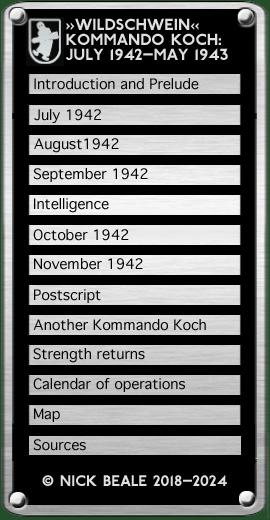|
At 2100 hours on 26 September, four II./KG 100 machines took off from Kalamaki to raid forward British positions in Egypt. The plan was to for them reach the target area at intervals and loiter there dropping bombs for an hour apiece before returning to base. This, it was hoped, would draw attention from the 14 Ju 88 of KG 77 raiding Helwan and Heliopolis. By 0320, three of them had returned, reporting: “Harassing attacks in El Alamein area on railway, roads, field positions and lorry concentrations without any particular result being observed. Defence: well placed strong AA”. Early next day, Fl. Kps. X asked Fliegerführer Afrika to institute a search for He 111 6N+AJ “apparently ditched (according to ground station D/F) at about 2340/26/9 in [map square] 8351”. The Flifü duly sent a reconnaissance Ju 88 to search for the missing Heinkel but without success. On the 28th the commander of Seenotdienst 2 (Süd) reported to his Athens superiors on “regarding the close investigation of the sea rescue incident [involving] He 111 6N+AJ”, commenting that “the contradictions between the reports sent showed that there were no clear command relationships”.
The 6. Staffel’s He 111 H-6, W.Nr. 7222 (6N+AJ) had been loaded with a single 500 kg and 8 x 50 kg bombs plus 8 x AB 23 canisters, it was also fitted with a reserve fuel tank. The crew experienced D/F problems and got lost, bombing an encampment as a target of opportunity. After an encounter with accurate A.A. fire, a cooling system breakdown in the plane’s starboard engine and defective trimming led to a forced landing about 25 km SW of RAF El Amiriya, in the Nile Delta. The crew initially believed they had reached friendly lines and mistook the Palestinian unit which found them for Italians.
I’ve done a lot of flying at night with the Sondergerät. We had no losses at all throughout August and September. I was over Alexandria with some 12–20 four-engine machines. I landed at 0400 hours. The night fighters were unsuccessful … By means of the Sondergerät you can establish exactly where a cruiser or submarne is. Dümmler also spoke of an operation where: My job was to draw the night fighters on to my machine. The AA worked marvellously, the firing was really wonderful. The night fighters were over 1500 metres up. I arrived at El Alamein on a course of 340º 20”. During September a new draft of crews had joined the Sonderkommando but they had no blind-flying experience and so it had been necessary to draw on II./KG 100 to fly the unit’s Heinkels. The prisoners had not themselves operated the special equipment but were able to describe the various systems in use:
Koch’s work was experimental and directed toward countering night fighters and protecting convoys through the detection and disruption of Allied systems. Personnel The prisoners identified the following members of the Kommando:
Aircraft There were five aircraft on hand: a Do 217 “converted into a long range fighter and fitted with ASV”; an He 111 fitted with ASV and marked GJ+JF; three He 111 detached from KG 100 and fitted with Protekt, two of which were TM+KB and TM+KM. Here again the testimony departs from what can be corroborated elsewhere. I have found no other mention of a Do 217 on the unit’s strength, only the Lichtenstein-equipped machines of the Nachtjagdkommando; conversely, Koch had a Ju 88 D-1 on strength of which these prisoners apparently said nothing. A GJ+JF is not mentioned in my other sources but GJ+JH features repeatedly in reports of sorties flown; TM+KM (W.Nr. 7583) can however be confirmed and TM+KP had been lost on 2 September, so TM+KB may perhaps have been correct. continued on next page …
|
||||||||||||||||||||||||||



 All four of the Heinkel’s crew were taken prisoner: Fw. Helmut Dümmler (pilot); Uffz, Anton Dostal (observer); Uffz. Heinz Klostermann (wireless operator); and Gefr. Friedrich Pallada (air gunner). The latter two proved of sufficient interest to their interrogators to generate eight reports, for they had knowledge of Sonderkommando Major Koch. That unit shared Kalamaki with II./KG 100, was attached to it for administrative purposes and Dümmler’s crew had flown four sorties on its behalf, as the pilot related to fellow prisoners:
All four of the Heinkel’s crew were taken prisoner: Fw. Helmut Dümmler (pilot); Uffz, Anton Dostal (observer); Uffz. Heinz Klostermann (wireless operator); and Gefr. Friedrich Pallada (air gunner). The latter two proved of sufficient interest to their interrogators to generate eight reports, for they had knowledge of Sonderkommando Major Koch. That unit shared Kalamaki with II./KG 100, was attached to it for administrative purposes and Dümmler’s crew had flown four sorties on its behalf, as the pilot related to fellow prisoners: